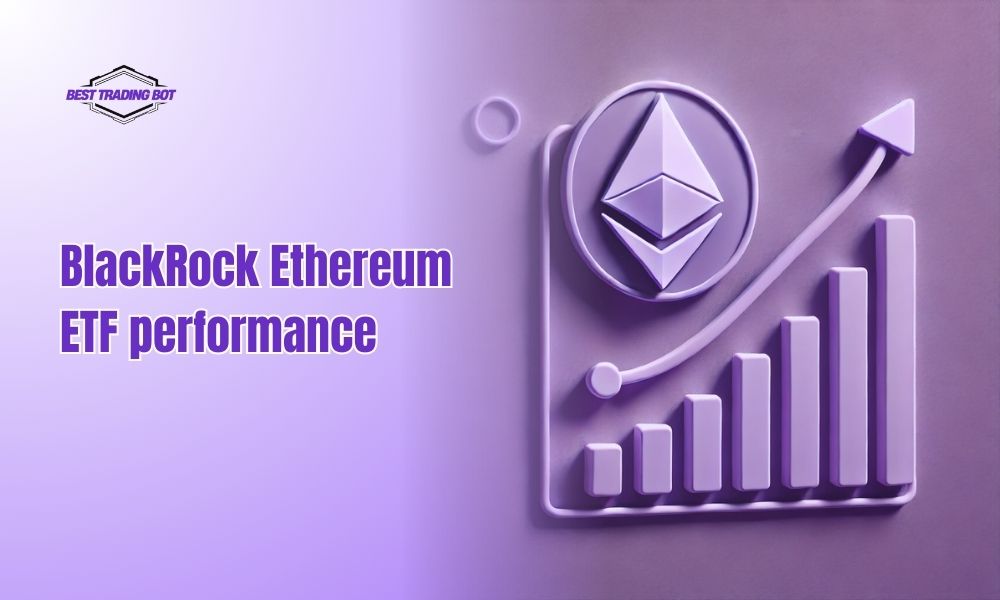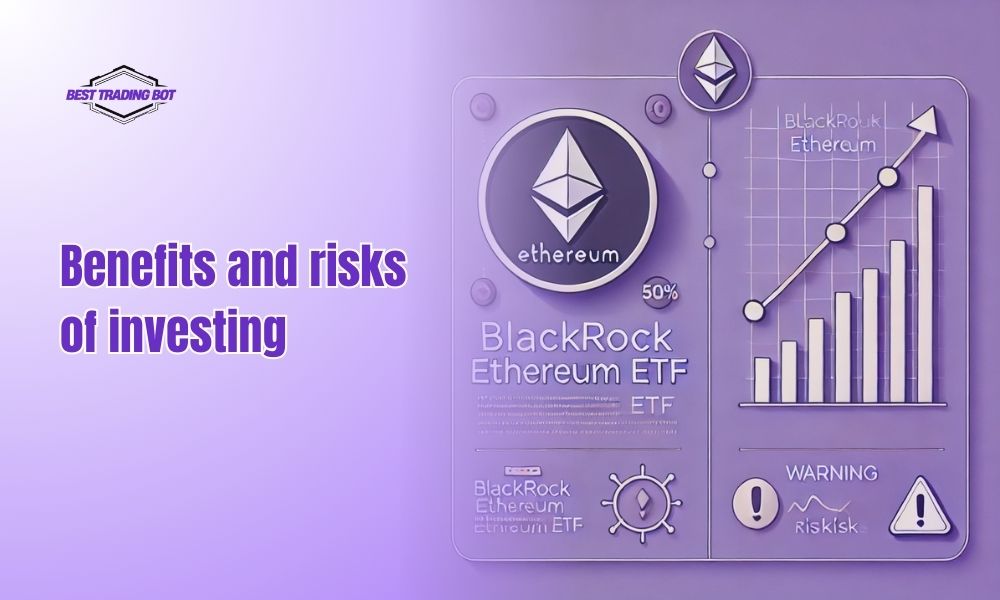BlackRock Ethereum ETF performance has become a hot topic in 2025 as investors seek easy exposure to Ethereum through a trusted fund. Managed by BlackRock under the iShares Ethereum Trust (ETHA), this ETF tracks Ethereum’s price, offering a seamless investment option. How has it performed so far? This article dives into data, trends, and key factors to answer that question.

Contents
BlackRock Ethereum ETF performance: data and metrics
The BlackRock Ethereum ETF launched on July 23, 2024, and quickly gained traction, pulling in $869.8 million in inflows within its first month. By March 2025, its assets under management (AUM) have climbed steadily, a sign of growing trust from institutional and retail investors alike. Early data shows it’s one of the stronger performers among Ethereum-based funds, buoyed by a bullish crypto market.
Its returns align closely with Ethereum’s spot price, though slight gaps emerge due to management fees and operational costs. BlackRock’s reputation for reliability has helped maintain consistent interest, with trading volume reflecting active participation. Compared to other crypto ETFs, its inflows suggest a competitive edge in the space.
Looking at March 2025 trends, the fund benefits from Ethereum’s price surges, though dips in the broader market occasionally temper gains. Analysts note that its performance metrics – like net asset value (NAV), offer a clear view of its health. For investors, these numbers highlight a promising, yet volatile, opportunity.
Factors influencing performance
Ethereum’s price volatility stands as the primary force behind BlackRock Ethereum ETF performance, driving both its highs and lows. When Ethereum rallies, the ETF sees strong returns, but sudden drops can erase gains quickly. This tight correlation makes it a direct play on crypto market dynamics, appealing to risk-tolerant investors.
BlackRock’s fee structure also plays a role: it charges 0.12% for the first $2.5 billion in AUM, increasing to 0.25% after July 2025 when the initial discount ends. These costs, while competitive, reduce net returns compared to holding Ethereum directly. Additionally, regulatory shifts—like potential SEC rulings – could sway investor sentiment and inflows.
Beyond price and fees, external factors like market trends and competition matter. BlackRock’s Bitcoin ETF (IBIT) often steals the spotlight, potentially diverting funds from the Ethereum ETF. Meanwhile, broader adoption of crypto ETFs in 2025 boosts its visibility. Together, these elements create a complex mix of risks and rewards for investors.
Performance vs. expectations
The BlackRock Ethereum ETF meets its core objective of mirroring Ethereum’s price, delivering reliable tracking since its debut. However, some early forecasts predicted outsized gains that haven’t fully materialized, partly due to market turbulence. Still, its ability to stay in sync with Ethereum’s ups and downs earns it solid marks from analysts.
Community feedback, leans positive, with users praising BlackRock’s transparency and professional management. Critics, though, point to occasional premiums or discounts to NAV as a downside, reflecting inefficiencies in volatile periods. Overall, it’s seen as a dependable option for those wanting crypto exposure without direct ownership.
Looking forward, its trajectory hinges on Ethereum’s momentum through 2025. If Ethereum climbs past key resistance levels, the ETF could exceed current expectations, drawing more inflows. Conversely, a bearish turn might test its resilience. For now, it’s a steady performer in the crypto ETF landscape, balancing promise with inherent market risks.
Benefits and risks of investing
Investing in the BlackRock Ethereum ETF offers a straightforward way to tap into Ethereum’s growth without managing wallets or private keys. It’s ideal for traditional investors who prefer regulated products, backed by BlackRock’s expertise. This accessibility has fueled its popularity since launching in 2024.
However, risks are notable. BlackRock Ethereum ETF performance is tied to Ethereum’s volatility, meaning sharp price drops can hit hard. Fees – though low compared to some funds – still erode returns over time, and the ETF isn’t insured by FDIC, unlike bank deposits. These factors demand careful consideration.
For risk-tolerant investors, the ETF’s benefits may outweigh its downsides, especially with Ethereum’s long-term potential. Yet, it’s not a one-size-fits-all solution. Those seeking higher control might prefer direct crypto ownership. Weighing these pros and cons is key to deciding if this fund fits your strategy.

How to track BlackRock Ethereum ETF performance
Tracking BlackRock Ethereum ETF performance starts with official sources like BlackRock’s website, where daily NAV and AUM updates are posted. Financial platforms like Yahoo Finance or Bloomberg also provide real-time price data and historical charts. These tools help investors monitor returns and spot trends.
For deeper analysis, look at inflows and outflows via services like Farside Investors, which reveal institutional activity. Comparing these metrics to competitors, like Fidelity’s Ethereum ETF, adds perspective. Staying proactive with these resources keeps you ahead in navigating this crypto ETF’s ups and downs.
BlackRock Ethereum ETF performance offers a clear window into the potential of crypto investing through a top-tier fund. With strong inflows and a tight link to Ethereum’s price, it’s a solid choice for investors. Yet, market fluctuations remain a key watchpoint. Stay updated on the latest insights and trends by following Best Trading Bot for smarter investment moves.
